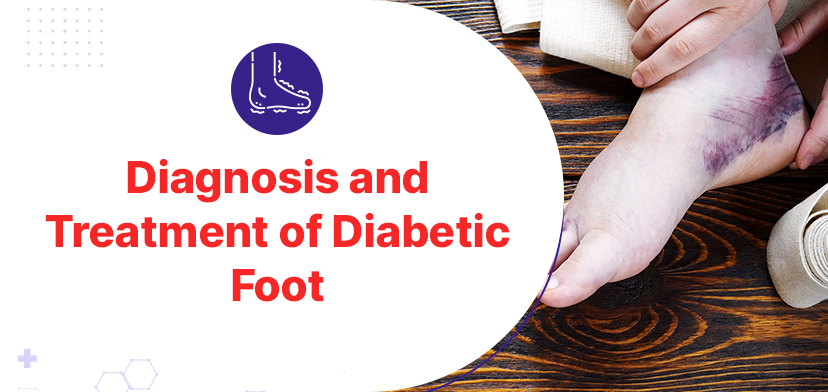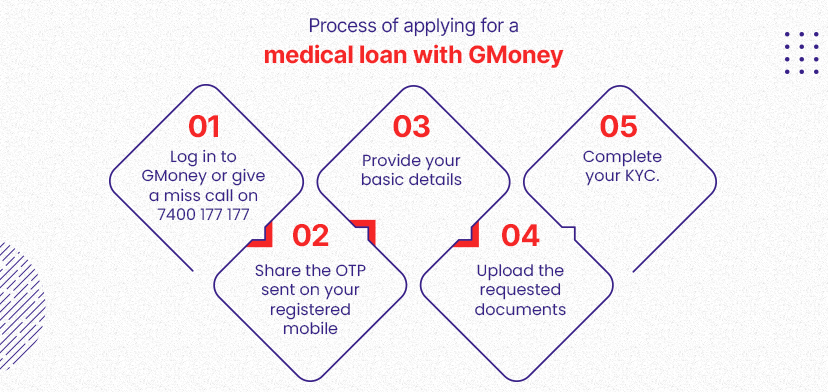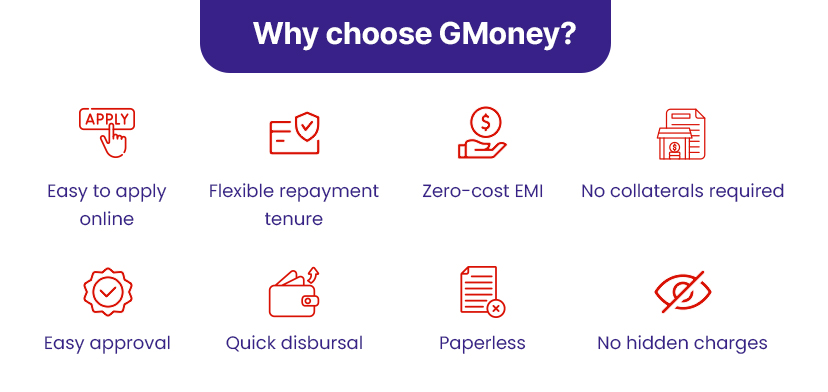Home » Diagnosis and Treatment of Diabetic Foot in Chennai

Diabetes is a widespread disease that affects millions of people throughout the world. It is a chronic disease that affects how the body processes glucose or sugar, which is required for energy production. It is treatable with medicine, diet, and exercise. If left untreated, it can still lead to major health consequences such as heart disease, stroke, renal failure, and nerve damage.
Diabetic foot treatment in Chennai can be costly, creating a financial strain for those suffering from the ailment. Fortunately, some steps can be taken to reduce the cost of medical treatment. For example, GMoney Instant Medical Loan offers individuals a reasonable loan for diabetic foot treatment. These loans can be used to cover medical expenses such as doctor’s appointments, prescriptions, and other diabetes-related charges.
A. High Blood Sugar Levels:
High blood sugar levels are one of the main causes of diabetic foot, which can damage blood vessels and nerves in the feet over time.
B. Nerve Damage:
Nerve damage, often known as neuropathy, is another cause of diabetic foot and can cause numbness and diminished sensation in the feet. This can make it harder for diabetics to recognise foot injuries or blisters, increasing the risk of infection.
C. Circulatory problems:
Diabetic foot can also be caused by poor circulation in the feet. This can result in decreased oxygen and nutrition flow to the feet, making wound healing difficult and raising the risk of infection.
It’s crucial to remember that these reasons are linked, and people with diabetes frequently have a combination of high blood sugar levels, nerve damage, and circulation difficulties in their feet. We can try to avoid or manage diabetic foot by identifying the underlying causes.
A. Physical Examination:
A physical examination of the feet by a healthcare expert is the first step in diagnosing diabetic foot. This will involve examining the skin, nails, and any wounds or sores.
B. Laboratory Tests:
Blood tests can be performed to detect excessive blood sugar levels and other signs of diabetes and diabetic foot. This can include a fasting blood sugar test, an HbA1c test, and any other tests that the healthcare provider recommends.
C. Imaging Tests:
Diabetic foot can also be diagnosed through imaging tests such as X-rays or MRI scans. These tests can help discover problems with the bones and tissues of the feet, infections, and other underlying concerns.
The best diabetic foot surgeon in Chennai can effectively diagnose diabetic foot and design an appropriate treatment strategy by combining these diagnostic tests. Early and precise diagnosis is critical for controlling the disease and avoiding significant complications.
A. Medical treatments
Medications for Pain Relief and Infection Prevention
Proper Wound Care
B. Surgical procedures
Dead Tissue Debridement
Amputation for Severe Cases
C. Lifestyle modifications
Proper foot care
Exercise and Physical Therapy
It is critical to understand that the optimum therapy for the diabetic foot is determined by the severity of the condition and the individual’s general health. A multidisciplinary strategy comprising a healthcare physician, a podiatrist, and a physical therapist can yield the best results.
The cost of diabetic foot treatment in Chennai may range from 40,000 to 71,500 rupees. It varies according to the severity of the condition and the treatment options selected. Medical therapies, such as drugs and correct wound care, can help diabetic foot patients avoid more serious complications and improve their results. However, surgical procedures such as amputation may be required if the illness is severe enough.
Amputation is an expensive treatment that can place a financial strain on families. However, it is occasionally important to avoid more serious problems, such as gangrene, and to improve the quality of life for diabetic foot patients.
GMoney provides medical loans to help persons with diabetes pay for diabetes-related treatments and operations. GMoney loan for medical treatment makes diabetic foot treatments more affordable and accessible to needy individuals.
GMoney provides loans with zero interest rates, no-cost medical EMI, and flexible repayment choices, empowering individuals to take charge of their health and finances. GMoney offers a dependable and safe platform for consumers to gain access to the tools they require to manage their diabetic feet and live a better life.

1) How can people with diabetes enhance their foot circulation?
Diabetes patients can enhance their foot circulation by engaging in regular physical activity, eating a balanced diet, and not smoking.
2) How can people with diabetes lower their risk of neuropathy?
Diabetics can lower their risk of neuropathy by maintaining good glycemic control, avoiding smoking, and engaging in regular physical activity.
3) What are the most common drugs used to treat diabetic foot?
Pain relievers, antibiotics, and drugs to promote circulation and prevent infections are all widely used to treat diabetic feet.
4) Is surgery the only choice for severe diabetic foot cases?
No, surgery is not the sole choice for severe diabetic foot patients. A healthcare provider may recommend non-surgical treatments such as wound care, debridement, and medicines.
5) Is physical therapy a common treatment option for diabetic foot?
Yes, physical therapy is a common treatment for diabetic foot because it helps improve circulation, relieve discomfort, and avoid foot issues.
6) How much can I borrow using a GMoney loan for medical treatment?
You can borrow enough money to pay for both medication and treatment costs because the loan amounts can be customized to the patient’s treatment needs.
7) What other benefits are available with a GMoney medical loan?
GMoney provides versatile repayment terms, rapid loan approvals, and no hidden fees.
8) Is GMoney medical loan available in other cities?
Yes, GMoney medical loans are available in many cities across India.

Diabetic foot is a dangerous and potentially fatal ailment that can affect people with diabetes. Recognising the symptoms and seeking medical assistance if they arise is critical. Early detection and treatment can help prevent more serious problems and improve outcomes for diabetic foot patients. Furthermore, GMoney medical loans can help make diabetic foot treatments more reasonable, allowing people to take control of their health and their finances.
Disclaimer: THIS WEBSITE DOES NOT PROVIDE MEDICAL ADVICE.
The hip joint is a major weight-bearing joint in the body that is made up of the pelvic bone’s socket (acetabulum) and a rounded bone (femur head). The injured hip joint is removed during hip replacement surgery and replaced with an artificial hip joint.
The new artificial joint is made out of metal and plastic components and is designed to move like a normal hip joint.
The total hip replacement surgery is performed by an orthopaedic surgeon, with the patient under general anaesthesia. Depending on the severity of the condition, the patient may be hospitalised for a few days or perhaps a few weeks following surgery.
Post-treatment, physical therapy is needed to assist the patient to regain hip joint function and range of motion.
Follow us
Reach us
Mumbai HO
GMoney Pvt. Ltd.
315, 215 Atrium,
Next to Courtyard by Marriott,,
A.K. Road, Andheri East,
Mumbai - 400093
Ph : +91 86570 00105, +91 72089 60444
Quick Links
Bengaluru
GMoney Technologies Pvt. Ltd.
Oyo Work Spaces, Umiya Emporium,
Opposite Forum Mall, Hosur Rd,
Koramangala, Bengaluru,
Karnataka 560029
Ph : +91 89717 34815
Delhi
GMoney Technologies Pvt. Ltd.
Berry Co Works, 1E/3,
Jhandewalan extension,
Next to jhandewalan metro station
gate no. 2 Barakhambha Road,
New Delhi, Delhi 110001
Ph : +91 97116 26832
Pune
GMoney Technologies Pvt. Ltd.
91 Spring Board, Sky Loft,
Creaticity Mall, Off, Airport Rd,
opposite Golf Course, Shastrinagar,
Yerawada, Pune,
Maharashtra 411006
Ph : +91 84250 28758
Chandigarh
GMoney Technologies Pvt. Ltd.
SCO no. 292,
First Floor, Sector 35D,
Chandigarh
Ph : +91 84279 82012
Jaipur
GMoney Pvt. Ltd.
CODESKK Civil Tower,121 122,
Pandit TN Mishra Marg,
Santhosh Nagar, Nirman Nagar,
Jaipur – 302019
Ahmedabad
GMoney Pvt. Ltd.
22nd Floor, B Block,
Westgate By True Value,
Nr. YMCA Club, SG Highway,
Ahmedabad – 380051
Hyderabad
GMoney Pvt. Ltd.
Dwaraka Pride,
Plot no. 4/1, Survey No. 64,
Huda Techno Enclave, Madhapur,
Hyderabad (Telangana) – 500081
Chennai
GMoney Pvt. Ltd.
DBS Business Center, 31A,
Cathedral Garden Rd, Badrikari, Tirumurthy Nagar, Nungambakkam, Chennai, Tamil
Nadu – 600 034
Mumbai HO
GMoney Pvt. Ltd.
315, 215 Atrium,
Next to Courtyard by Marriott,,
A.K. Road, Andheri East,
Mumbai - 400093
Ph : +91 86570 00105, +91 72089 60444
Bengaluru
GMoney Pvt. Ltd.
3rd floor, Ranka Junction,
AH45, Krishna Reddy Industrial Estate,
Dooravani Nagar,
Bengaluru Karnataka - 560016
Ph : +91 72089 60444
Pune
GMoney Pvt. Ltd.
91 Spring Board, Sky Loft,
Creaticity Mall, Airport Rd,
Opp. Golf Course, Shastrinagar,
Yerawada, Pune,
Maharashtra - 411006
Ph : +91 72089 60444
Delhi
GMoney Pvt. Ltd.
Berry Co Works, 1E/3,
Jhandewalan extension,
Gate no. 2 Barakhambha Road,
New Delhi, Delhi - 110001
Ph :
+91 72089 60444
Chandigarh
GMoney Pvt. Ltd.
SCO No. 292,
First Floor, Sector 35D,
Chandigarh - 160022
Ph : +91 72089 60444
Hyderabad
GMoney Pvt. Ltd.
Dwaraka Pride,
Plot no. 4/1, Survey No. 64,
Huda Techno Enclave, Madhapur,
Hyderabad (Telangana) - 500081
Jaipur
GMoney Pvt. Ltd.
CODESKK Civil Tower,121 122,
Pandit TN Mishra Marg,
Santhosh Nagar, Nirman Nagar,
Jaipur - 302019
Chennai
GMoney Pvt. Ltd.
DBS Business Center, 31A,
Cathedral Garden Rd, Badrikari,
Tirumurthy Nagar,Nungambakkam, Chennai,
Tamil
Nadu - 600 034
Pune | Mumbai | New Delhi | Kolkata | Chennai | Navi Mumbai| Bengaluru | Ahmedabad | Nagpur | Hyderabad | Jaipur | Lucknow | Bhopal | Bhubaneswar | Nashik | Indore | Ghaziabad | Kanpur | Amritsar | Vasai | Noida | Gurugram | Chandigarh | Ranchi | Cuttack | Thane | Kalyan | Jalandhar | Kolhapur | Visakhapatnam | Chakan| Greater Noida | Wagholi | Raipur | Panvel | Belgaum | Mohali | Bhiwandi | Talegaon | Coimbatore | Palghar | Mumbra | Sangli | Surat | Durgapur | Ludhiana | Kochi | Agra | Ahmednagar | Ajmer | Akola | Aurangabad | Baroda | Beed | Rewari | Patiala | Vellore | Ranjangaon | Nanded | Nellore | Panipat | Panjim | Madurai | Mysore | Mangalore | Korba | Mathura | Kalaburagi | Jalgaon | Kharar | Guwahati | Kollam | Jamshedpur | Gwalior | Saswad | Solapur | Varanasi | Salem | Sambalpur | Jodhpur | Hubli | Panchkula | Faridabad | Amravati | Ayodhya | Badlapur | Dehradun | Parbhani | Ujjain | Udaipur | Tiruchirappalli | Srinagar | Shimla | Secunderabad | Ratnagiri | Pandharpur | Ananthapuram | Buldhana | Hadapsar | Baramati | Chittoor | Darjeeling | Dhule | Fatehpur | Gandhinagar | Haridwar | Gorakhpur | Jhansi | Kanchipuram | Kartarpur | Kurukshetra | Pondicherry | Prayagraj | Bharuch | Bhusawal | Bathinda | Pathankot | Nandurbar | Niphad | Kolar | Ambala | Kota | Pendurthi | Jabalpur | Palwal | Bhilai | Bhiwani | Bilaspur | Patna | Rohtak | Phagwara | Malegaon | Vijayawada | Bikaner | Chiplun | Darbhanga | Roorkee | Bhor | Rajahmundry | Margao | Alwar | Dhanbad | Bulandshahr | Aluva | Mulshi | Davanagere | Kapurthala | Anantapur | Loni | Latur | Gondia | Chhindwara | Chandrapur | Dharmapuri-TN | Faridkot | Dharwad | Daund | Chaksu | Bareilly | Kakinada | Haldwani | Doddaballapur | Dindori-MH | Bagru | Kudus | Kozhikode | Gurdaspur | Bokaro | Berhampur | Batala | Barrackpore | Ramgarh | Meerut | Bassi | Dera Bassi | Howrah | Karjat Raigarh | Thiruvananthapuram | Bheemunipatnam | Ambegoan | Allahabad | Aligarh | Alappuzha | Tirupathi | Thoppumpady | Srikakulam | Siliguri | Rourkela | Mirzapur | Gadag | Bellary | Tumkur | Sonipat | Hoshangabad | Junnar | Jalna | Hisar | Karnal | Kottayam | Muzzafarnagar | Ramnagara | Thrissur | Bahadurgarh | Balasore | Baraut | Dhar | Ernakulam | Gadhinglaj | Chikodi | Vaniyambadi | Kamothe |